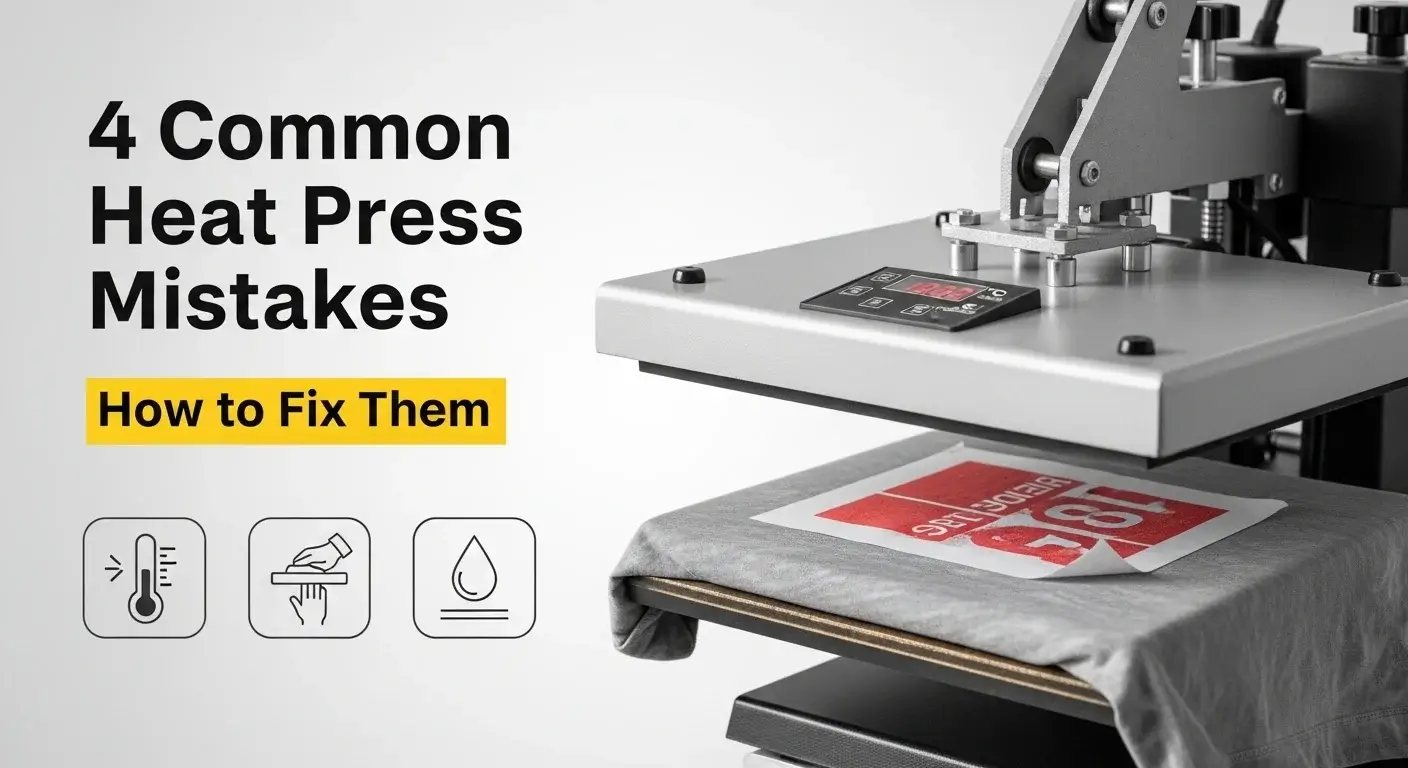4 Common Heat Press Mistakes and How to Fix Them
Getting clean, consistent sublimation results requires more than pressing a button. Even minor mistakes, like uneven pressure or wrong temperature, can lead to ghosting, fading, or misaligned designs.
If you’ve ever pulled a project off the press and thought, “What went wrong?”, this guide breaks it down. From fixing dull prints to avoiding scorched shirts, each mistake here is based on real production issues many beginners and pros face alike.
Temperature inconsistencies are one of the most overlooked issues in sublimation. Learn more about ideal sublimation temperatures for different materials and why even a few degrees off can cause failures.
Some problems aren’t caused by heat at all, but by poor transfer placement. If you’re tired of shifting prints or tape marks, check out smart alternatives to heat tape that can keep your transfers in place without damaging your blanks.
Sublimation and heat transfer printing depend on precision. Even small errors can ruin prints, waste materials, or damage your equipment. This guide explains four common heat press mistakes and offers straightforward ways to correct them.
1. Incorrect Temperature Settings
Problem:
Using the wrong temperature can lead to faded prints, overburned transfers, or ink not bonding properly with the substrate.
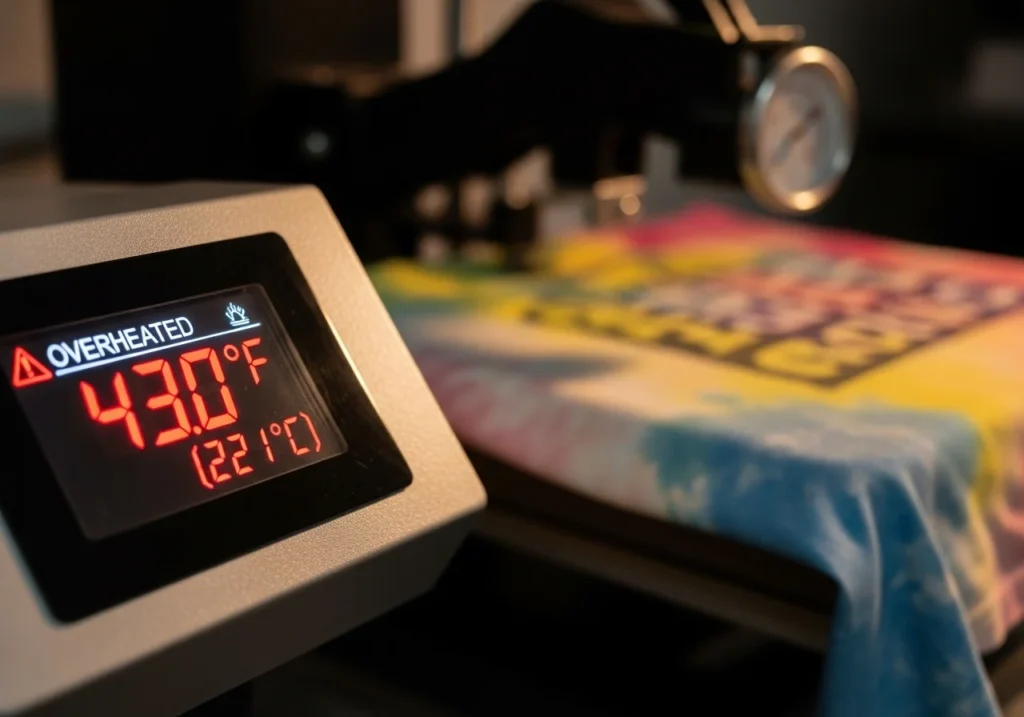
Common Signs:
- Dull or faded colors
- Blurry designs
- Scorched or yellowed areas
How to Fix It:
- Check manufacturer settings: Every material, polyester, ceramic, aluminum, has a recommended heat range.
- Use a heat gun or infrared thermometer: Plate temperatures may vary from the controller reading.
- Avoid overheating: Most sublimation jobs require 375–400°F. Going above this risks burning or gas blowout.
Suggested Ranges for Common Substrates:
| Material | Temp (°F) | Time (Seconds) | Pressure |
|---|---|---|---|
| Polyester | 385–400 | 45–60 | Medium |
| Ceramic Mug | 375–400 | 180–240 | Firm |
| Aluminum Sheet | 375–400 | 60–90 | Light to Medium |
2. Uneven Pressure Application
Problem:
Inconsistent pressure causes ghosting, patchy transfers, or edge fading.
Common Signs:
- Design looks strong in one area, faint in another
- Blurred lines or “double images”
- Ink bleeding at the edges
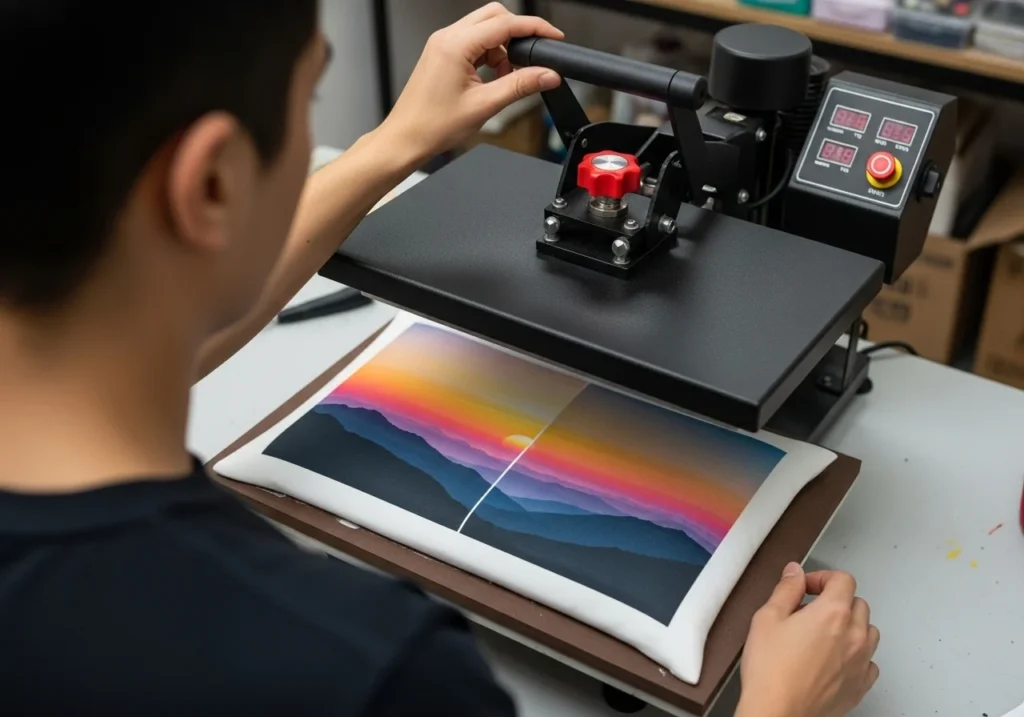
How to Fix It:
- Adjust pressure knob: Ensure even contact across the surface.
- Use pressing pillows or foam pads: These help with uneven items like zippers or seams.
- Test before production: Use a pressure test strip or blank sample to confirm even contact.
Tip: For garments, medium pressure (30–40 psi) is usually optimal. Excessive force can flatten fibers and distort prints.
3. Moisture in Substrate or Paper
Problem:
Trapped moisture creates steam during pressing, causing bubbling, fading, or smudging.
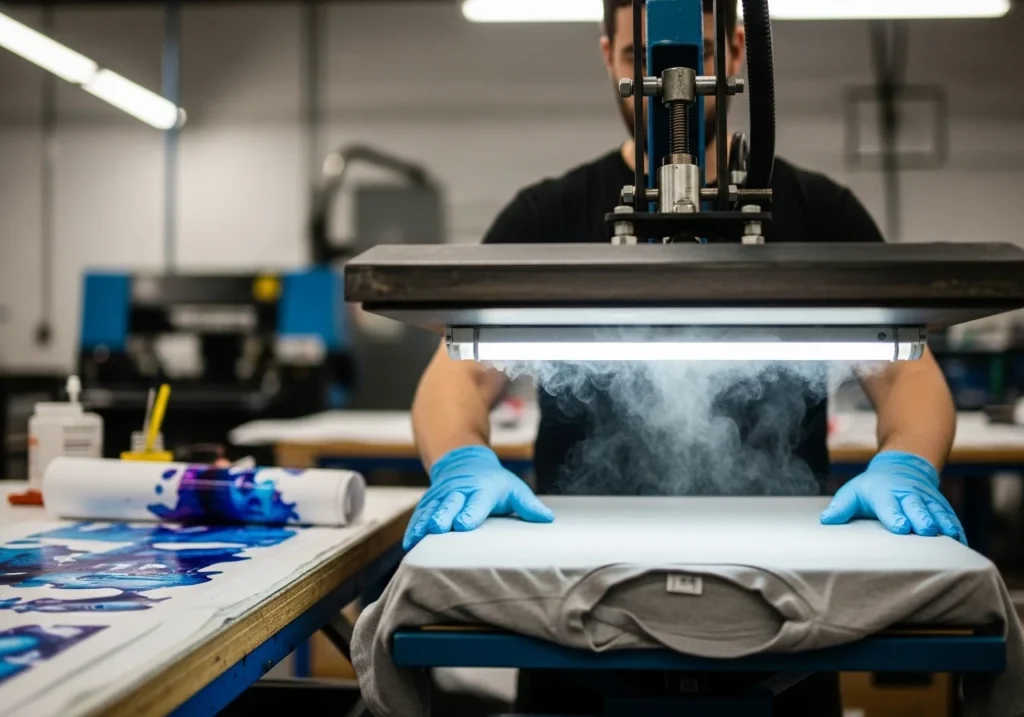
Common Signs:
- Uneven color density
- Watermarks or blurry patches
- Substrate feels damp after pressing
How to Fix It:
- Pre-press garments: Apply light heat (5–10 seconds) to remove moisture.
- Store paper in a dry place: Humidity affects sublimation paper performance.
- Use fresh substrates: Avoid blanks stored in humid environments.
Ideal Conditions:
Maintain relative humidity between 35–50% in your production space.
4. Misaligned Transfers
Problem:
Even if the print looks sharp, poor alignment ruins the final product.
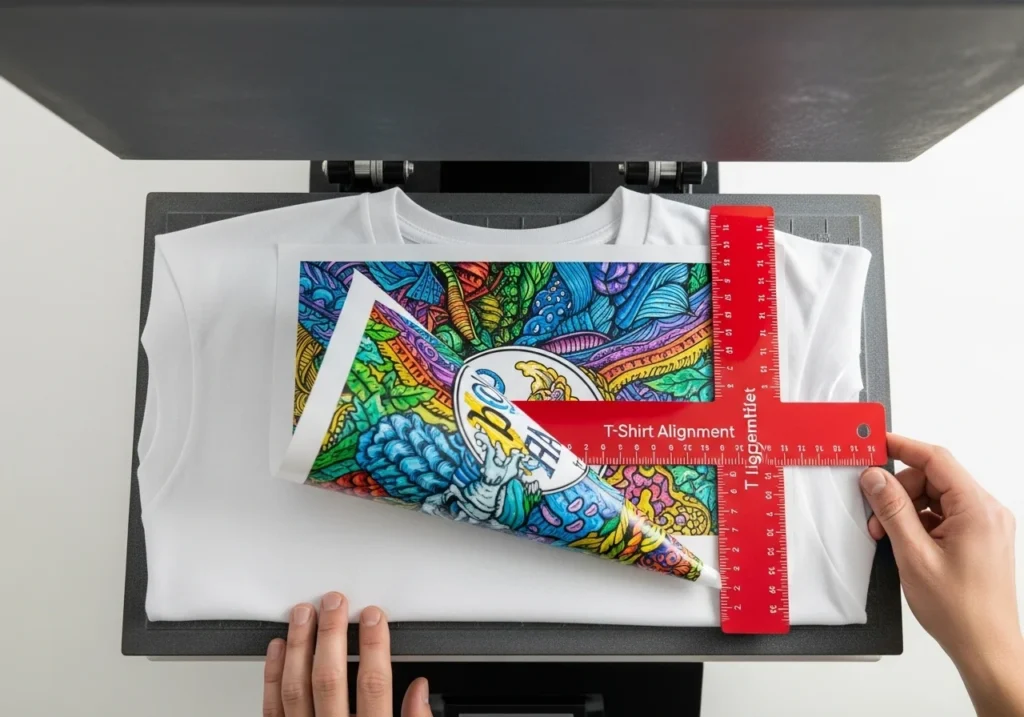
Common Signs:
- Design off-center or crooked
- Inconsistent placement on multiple items
- Text not level
How to Fix It:
- Use alignment tools: Rulers, T-shirt templates, or laser guides help with consistency.
- Secure the transfer: Use heat-resistant tape, silicone bands, or shrink sleeves to hold prints in place.
- Mark placement zones: Light chalk or alignment grids speed up repetition and reduce human error.
For T-Shirts:
| Shirt Size | Recommended Design Placement (from Collar) |
|---|---|
| Small | 2.5″ – 3″ |
| Medium | 3″ – 3.5″ |
| Large+ | 3.5″ – 4″ |
Final Checks Before Pressing
To reduce all four mistakes, follow this simple pre-press checklist:
- ✅ Is the heat platen calibrated correctly?
- ✅ Is the material moisture-free?
- ✅ Is pressure evenly distributed?
- ✅ Is the transfer aligned and secured?
🚀 Elevate Your Printing Game
Professional printing resources for stunning results
